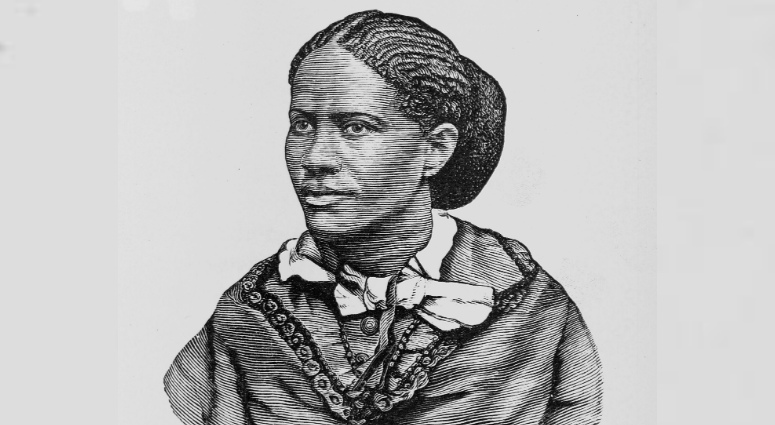
Black suffragists, such as Harriet Forten Purvis and Frances Ellen Watkins Harper, played a central role in the fight for women’s rights.
So, who were these prominent women of the movement?
Harriet Forten Purvis: Abolitionist and suffragist
Traylor describes Purvis as part of a group of women in colonial, antebellum Philadelphia, who focused on both abolition and women’s rights.
“The women of the Forten family, they are legendary,” she said.
Her mother, Charlotte, was an abolitionist in Philadelphia. Her sisters, Margaretta and Sarah, used poetry and letters as an outlet to speak out against slavery. Together — along with notable Quaker abolitionist and suffragist Lucretia Mott — they established the Philadelphia Female Anti-Slavery Society in 1833.
As the first interracial abolition society, they organized petitions and boycotts and raised money for causes related to antislavery.
“It was really the abolitionist movement that gave both white women and Black women experience with having a public voice,” Traylor explained. “Women were not supposed to be speaking in public about anything, and it was the abolitionist movement that gave them experience with how to speak to the public about issues that were important to them.”
Purvis and her husband, Robert — a renowned supporter of the Underground Railroad — made significant strides toward civil rights. According to Traylor, they were both dedicated to enacting long-lasting and worthwhile changes, outside of their own family of eight children.
Baker-Rogers described Harper as “the mother of African-American journalism.” As a writer, educator and activist, Harper used her writings to emphasize equality for women, equal rights for African-Americans, and, overall, freedom.
Harper was born free in Baltimore, Maryland, according to Bakers-Rogers, but she could not return there due to the Fugitive Slave Act, which allowed free Blacks like Harper to be arrested and sold into slavery if they were caught.
She settled in Philadelphia, and over the course of her career, her work garnered her international notoriety. She became known as the 19th century’s most prolific Black novelist and best-loved Black poet.
“Her work was on multiple fronts,” said Baker-Rogers. “What she found herself doing was necessary work. John Lewis talked about getting in good trouble — her work was good and necessary. To accomplish that, she really spread herself thin.”
Harper was on the road all the time, as she was a highly sought-after speaker for the anti-slavery movement, rights of Black people, and women’s suffrage.
“If you can, do as much as you can, however you can,” Baker-Rogers added.
“Having been a working woman, to have that stripped from her — she had to leave children with relatives. It speaks to the rights that she did not have as a Black woman and a woman. She had to start over. Everything in that home was taken — including the bed,” she said.
Harper became known for speaking out on issues of racism, classism, and sexism — even within the suffrage movement.
“There was definitely a split between white women and Black women in many of these organizations,” Baker-Rogers said, “and at some point, Frances had enough. One of the things she is definitely known for is speaking out at one of the conventions — the 11th National Women’s Rights Convention — where she spoke up in opposition to treatment by white women against African-American women in the movement.”
The rift over equality
It’s impossible to mention suffragists Purvis and Harper without also mentioning their commitment to abolition.
Unfortunately, their efforts and others’ toward antislavery created a schism among supporters of the women’s suffrage movement.
“You do realize that you have different goals,” Baker-Rogers explained. “Those goals are so significant that you have to make that shift for your race and gender.”
Due to a difference in ambitions and strained relationships, Black women decided to create their own institutions and foundations. They began to tackle racism in a direct, more-focused way.
“It was a stand for equality and human rights,” Traylor said. “These were women who would not accept the idea that some could be excluded. Some people did accept it, but they did not.”
Although a damaging fissure, this divide gave way to many forerunners of the civil rights movement.
“They were all fighting for human rights,” Traylor continued. “The 19th Amendment was certainly not realized until at least 1965. The idea of fighting for human rights is really an idea that undergirds a lot of the struggle of almost any Black woman who comes into public voice — the idea that people are equal regardless of race, sex.”
___
